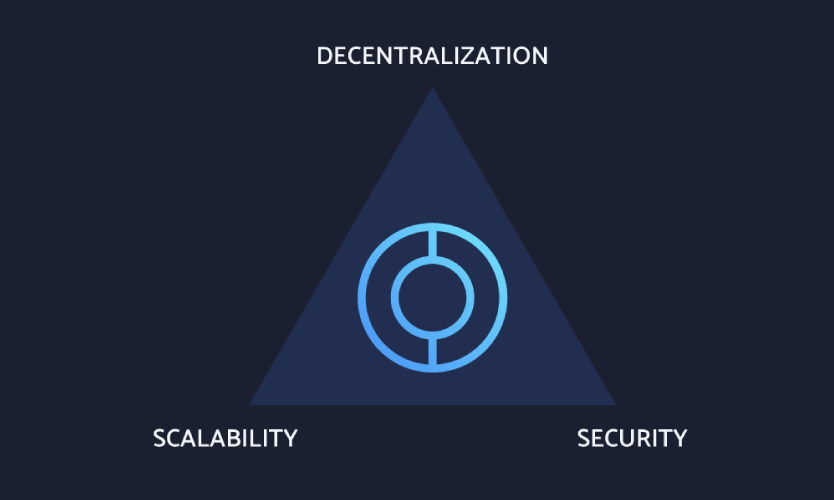What is The Trilemma of Blockchain?
The scalability trilemma, also known as the blockchain trilemma, is a theorem that formulates the primary challenge that arises when trying to scale any distributed network. It states that a blockchain can only have two of the three primary characteristics, which are...

The scalability trilemma, also known as the blockchain trilemma, is a theorem that formulates the primary challenge that arises when trying to scale any distributed network. It states that a blockchain can only have two of the three primary characteristics, which are decentralization, security, and performance.
What is the Trilemma of the Blockchain?
There are three primary characteristics shared by all blockchains:
- Scalability. It is possible for the network to increase its throughput, which means that it can handle a greater number of transactions in the same amount of time.
- Decentralization. The functioning of the network is independent of the necessity for verification by one or more reliable entities. Simply put, there should be no trust in a node or group of nodes that cannot be joined using a regular computer. This rule applies to both individual nodes and groups of nodes.
- Safety. Blockchain is able to withstand an attack that is launched by a sizable portion of the nodes in the network (ideally, fifty percent of all nodes in the network, but any percentage above twenty-five percent is considered a good level).
There are three groups of examples that illustrate this rule in a variety of ways, and they are as follows:
Bitcoin, Ethereum, and Litecoin are examples of traditional blockchains. Every participant operates what is known as a full node, which validates each transaction. These kinds of networks are characterized by a high level of security as well as decentralization, but they have a limited bandwidth.
Blockchains that operate at high speeds, including network architectures that are based on Delegated Proof-of-Stake algorithms. They only consist of a few nodes in total (10-100). At the same time, stringent requirements are imposed on each of them, such as the requirement to own pricey server equipment or a significant quantity of the native currency.
These networks are productive and secure, but they do not have an adequate level of decentralization.
Multi-chain systems are ones in which applications are connected to multiple blockchains, which then communicate with one another through cross-chain communication protocols. These systems are referred to as “multi-chain” systems.
This is an illustration of a decentralized network that is scalable, but it does not provide security. After all, in order to launch an attack, you will need to acquire control of the vast majority of nodes within just one blockchain of the system. This will allow you to “break” the typical structure and bring about unfavorable outcomes for all of the other participants.
How Was This Trilemma Created?
A scientist by the name of Eric Brewer came up with what is now known as the CAP theorem in the 1990s. According to them, a distributed database, such as blockchain, can only have two of the three primary properties: consistency, availability, and resistance to division.
Therefore, the theorem presents a challenge in the form of a problem: the developers of a decentralized database must give up one of the three properties in order to achieve the appropriate level of the other two properties. Because of this, the database’s potential for long-term growth is jeopardized.
After that, an application of this theory was developed for the blockchain. The concept of the “blockchain trilemma” gained widespread attention thanks to Vitalik Buterin, the inventor of Ethereum.
The platform that he developed was the very first one of its kind to allow for the creation of decentralized applications. If they are correct in their assumption that there is no limit to the number of users that can join Ethereum, then the network’s throughput should be able to increase without the blockchain losing any of its other essential properties.
